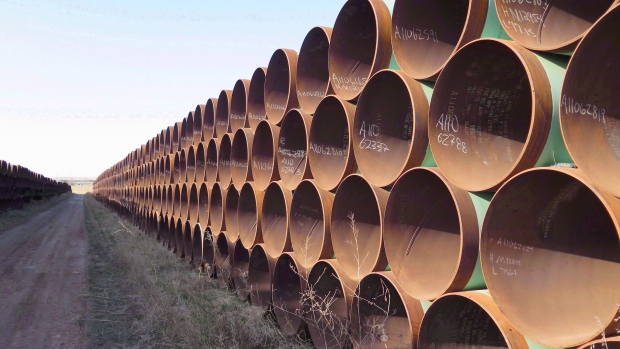Sep 9, 2016
‘People will scream bloody murder’: The supply and safety risks of not building new pipelines

Buying old pipelines instead of building new ones might be a smart strategy in the short term, but if the trend persists it could prove disastrous for Canada; both financially and physically.
Enbridge and TransCanada – the country’s two largest energy infrastructure providers – have failed to get new pipelines built in recent years in large part due to mounting public opposition. Instead, the two Calgary-based corporate rivals have opted to grow by acquisition with TransCanada paying US$13 billion in July for Columbia Pipeline Group and Enbridge offering a record-setting $37 billion in stock for Spectra Energy earlier this week.
The strategy is sound, for now, as income-focused investors will enjoy double-digit increases in the Enbridge dividend through at least 2024 as a result of the Spectra takeover. Eventually, however, one analyst argues the ongoing inability to augment and expand existing pipeline networks will lead to spiking energy prices and increased personal safety risks.
“We do need new infrastructure and we need it in places where people don’t realize,” said Dirk Lever, managing director of energy infrastructure analysis and head of research at AltaCorp Capital, in a telephone interview with BNN. “People don’t understand that with modern technology such as fracking, production is moving to new areas that do not have the needed infrastructure.”
“That is probably the overarching trend that people are missing,” he added.
The Marcellus formation in the northeastern United States, for example, produced effectively no petroleum products 10 years ago; today, output from the region exceeds total Canadian natural gas production. Even without a major rebound in crude oil prices, output from the oil sands of northern Alberta is also expected to grow by more than one million barrels per day in the next few years despite the region’s existing pipeline network already operating at capacity.
Lever believes public protests, such as the violent disruption of a National Energy Board hearing in Montreal last week over TransCanada’s proposed Energy East pipeline that forced the regulator to temporarily suspend its review, explains only part of the ongoing strategic shift in the pipeline business away from new projects.
“In Canada, on both sides of the border actually, it seems to be nearly impossible to build a new pipeline as the regulatory loops seem to get tougher and tougher to jump through so [companies] are probably getting a little frustrated,” Lever said. “You’ve also seen a massive recalculation of value downwards… that creates a situation where it is cheaper to buy [a pipeline] than build one.”
Inter Pipeline proved that point last month when it paid $1.35 billion for Williams’ Canadian assets. The purchase price represented a 45 per cent discount to the $2.5 billion Williams spent building up its asset base.
Yet despite the economic case for buying instead of building, Lever argues it is the ever-increasing opposition to new projects that will cause problems in the coming years.
“People will continue to push against this needed infrastructure until such times as shortages appear,” he said. “It could be shortages of gasoline or diesel or something else; but when it comes, price spikes will happen and people will scream bloody murder and say, ‘How did the industry allow this to happen?’ Well, sometimes people need that to happen, though I hate to say it.”
Relying on existing pipelines for longer also creates a higher physical safety risk, Lever argues, since much of North America’s current network has been operating for more than half a century and lacks modern safety and monitoring technology.
“We will run into bigger safety issues by putting more strain on the current [pipeline] system,” he said.
Once prices start to rise again and producers turn back to trains as an alternate – though more expensive – option for shipping their products, Lever believes that is when the real safety risks will become apparent. According to the International Energy Agency, oil spills occur more frequently on trains compared to pipelines; and, unlike pipelines, rail lines often run directly through densely populated urban areas.
While the situation could become even more dire for the already-beleaguered oil and gas industry after the consolidation has run its course, Gwyn Morgan believes there is little the sector can do to avoid an outcome where both investment and infrastructure levels are left to stagnate.
“This is way worse than any downturn that has ever happened in the industry, even than the National Energy Program [of the early 1980s],” the longtime Encana CEO told BNN on Wednesday.
“People at least then had hope for change.”



